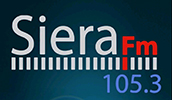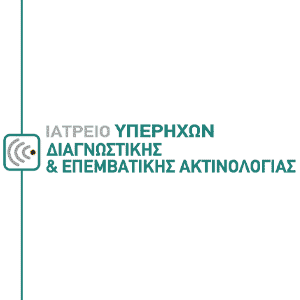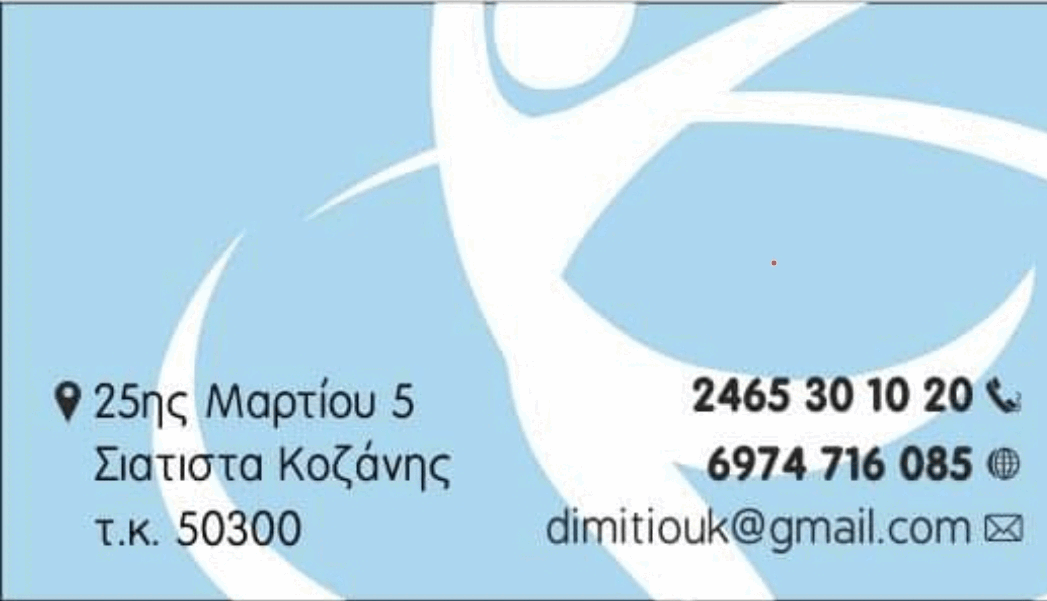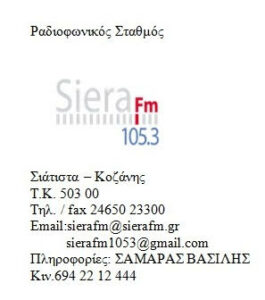Σε πολλούς μπορεί να έχει συμβεί να δέχονται ενοχλητικές κλήσεις επανειλημμένως υπό μορφή «φάρσας» ή πόσο μάλλον απειλητικές, εξυβριστικές και συκοφαντικές είτε από άγνωστο ή απόρρητο αριθμό. Σ’αυτές τις περιπτώσεις αν δεν ξέρεις τα στοιχεία του, εκείνο που μπορείς να κάνει είναι να μάθεις ποιος νούμερο σε καλεί ως εξής:
Μπορείς να ζητήσεις από την υπηρεσία παροχής επικοινωνίας που είσαι χρήστης να μη δέχεσαι κλήσεις με απόκρυψη (θα τους δείχνει ότι μιλάει όταν σε παίρνουν με απόκρυψη) ή να αιτηθείς στον υπόχρεο πάροχο την εξουδετέρωση της απόκρυψης του καλούντος για περιορισμένο χρονικό διάστημα, με σκοπό τον εντοπισμό ενοχλητικών ή κακόβουλων κλήσεων (ΦΕΚ B 1853 – 21.12.2006). Στην δεύτερη αυτή περίπτωση όποιος σε καλεί με απόκρυψη θα ακούει ένα ηχογραφημένο μήνυμα (πριν χτυπήσει καν το δικό σου τηλέφωνο) ότι η απόκρυψή του έχει εξουδετερωθεί.
Μόλις μάθεις ποιο νούμερο σε καλεί, ανοίγει ένας δρόμος για τον εντοπισμό του ατόμου που σε ενοχλεί καταφεύγοντας σε έγκληση του προσώπου που σε απειλεί ή ενοχλεί. Οι εισαγγελικές, ανακριτικές και προανακριτικές Αρχές, πολύ δε περισσότερο τα Δικαστικά Συμβούλια και τα Δικαστήρια, δικαιούνται να ζητούν από τους παρόχους των Υπηρεσιών Επικοινωνίας, μέσω του διαδικτύου τα ηλεκτρονικά ίχνη μιας εγκληματικής πράξεως, την ημεροχρονολογία και τα στοιχεία του προσώπου στο οποίο αντιστοιχεί το ηλεκτρονικό ίχνος, από τους λοιπούς δε παρόχους των υπηρεσιών επικοινωνίας τα «εξωτερικά στοιχεία» της επικοινωνίας (αριθμός κλήσεως, στοιχεία καλούντος – καλουμένου, ώρα κλήσης κ.λπ.) και ο πάροχος υποχρεούται να τα παραδίδει χωρίς να είναι αναγκαίο να προηγηθεί άδεια κάποιας Αρχής και ιδίως της Αρχής Διασφάλισης του Απορρήτου των Επικοινωνιών (ΑΔΑΕ).
ΑΝΑΛΥΤΙΚΑ Η ΑΠΟΦΑΣΗ
Απόφαση ΑΔΑΕ 2322/2006 – ΦΕΚ 1853/Β/21-12-2006
Εξουδετέρωση της δυνατότητας μη αναγραφής της καλούσας γραμμής για τον εντοπισμό κακόβουλων ή ενοχλητικών κλήσεων
ΑΠΟΦΑΣΗ ΑΡΧΗΣ ΔΙΑΣΦΑΛΙΣΗΣ ΤΟΥ ΑΠΟΡΡΗΤΟΥ ΤΩΝ ΕΠΙΚΟΙΝΩΝΙΩΝ (ΑΔΑΕ)
(Αριθμ. Απόφ.: 159/2006)
Έχοντας υπόψη:
1.Τις διατάξεις:
α. του άρθρου 8 παρ. 7 εδ. α’ του ν. 3471/2006 «Προστασία δεδομένων προσωπικού χαρακτήρα και της ιδιωτικής ζωής στον τομέα των ηλεκτρονικών επικοινωνιών και τροποποίηση του ν. 2472/1997» (ΦΕΚ 133 Α’), β. του άρθρου 10 περ. α’ της υπ’ αριθμ. 2002/58/ΕΚ Οδηγίας του Ευρωπαϊκού Κοινοβουλίου και του Συμβουλίου «σχετικά με την επεξεργασία των δεδομένων προσωπικού χαρακτήρα και την προστασία της ιδιωτικής ζωής στον τομέα των ηλεκτρονικών επικοινωνιών (Οδηγία για την προστασία ιδιωτικής ζωής στις ηλεκτρονικές επικοινωνίες)», γ. του ν. 3115/2003 «Αρχή Διασφάλισης του Απορρήτου των Επικοινωνιών» (ΦΕΚ 47 Α’) και ιδίως το άρθρο 6 παρ. 1 εδ. ιβ’,
2.Το γεγονός ότι από τις διατάξεις αυτής της πράξης δεν προκαλείται δαπάνη σε βάρος του Κρατικού Προϋπολογισμού, αποφάσισε κατά τη συνεδρίαση της 6ης Δεκεμβρίου 2006, την έγκριση της πράξης με θέμα: «Εξουδετέρωση της δυνατότητας μη αναγραφής της καλούσας γραμμής για τον εντοπισμό κακόβουλων ή ενοχλητικών κλήσεων» με το περιεχόμενο που αναπτύσσεται ακολούθως:
Άρθρο 1
Σκοπός
1.Με την παρούσα πράξη καθορίζονται οι ειδικότερες διαδικασίες, ο τρόπος, η διάρκεια και κάθε άλλη αναγκαία λεπτομέρεια για την εξουδετέρωση της δυνατότητας μη αναγραφής της καλούσας γραμμής από τους φορείς παροχής δημοσίου δικτύου ή διαθέσιμης στο κοινό υπηρεσίας ηλεκτρονικών επικοινωνιών για τον εντοπισμό κακόβουλων ή ενοχλητικών κλήσεων, και τη διάθεση των δεδομένων που περιέχουν την αναγνώριση της ταυτότητας του καλούντος συνδρομητή ή χρήστη έναντι του συνδρομητή ή χρήστη που ζητά τον εντοπισμό.
2.Στις διατάξεις της παρούσας πράξης υπάγονται όλοι οι φορείς παροχής δημοσίου δικτύου επικοινωνιών ή διαθέσιμης στο κοινό υπηρεσίας ηλεκτρονικών επικοινωνιών.
Άρθρο 2
Ορισμοί
Για τους σκοπούς της παρούσας πράξης, πέραν των ορισμών που περιλαμβάνονται στο ν. 3471/2006 (ΦΕΚ 133 Α’), λαμβανομένων δε υπόψη των ορισμών του ν. 3431/2006 (ΦΕΚ 13 Α’), νοούνται ως:
«Συνδρομητής»: κάθε φυσικό ή νομικό πρόσωπο που έχει συνάψει σύμβαση με φορέα παροχής διαθέσιμων στο κοινό υπηρεσιών ηλεκτρονικών επικοινωνιών για την παροχή των υπηρεσιών αυτών.
«Χρήστης»: κάθε φυσικό πρόσωπο που χρησιμοποιεί διαθέσιμη στο κοινό υπηρεσία ηλεκτρονικών επικοινωνιών για προσωπικούς ή επαγγελματικούς σκοπούς, χωρίς να είναι απαραίτητα συνδρομητής της εν λόγω υπηρεσίας.
«Υπηρεσίες ηλεκτρονικών επικοινωνιών»: οι υπηρεσίες που παρέχονται συνήθως έναντι αμοιβής και των οποίων η παροχή συνίσταται, εν όλω ή εν μέρει, στη μεταφορά σημάτων σε δίκτυα ηλεκτρονικών επικοινωνιών, συμπεριλαμβανομένων των υπηρεσιών τηλεπικοινωνιών. Στις υπηρεσίες ηλεκτρονικών επικοινωνιών δεν περιλαμβάνονται υπηρεσίες παροχής ή ελέγχου περιεχομένου που μεταδίδεται μέσω δικτύων και υπηρεσιών ηλεκτρονικών επικοινωνιών, καθώς και υπηρεσίες της Κοινωνίας της Πληροφορίας, όπως αυτές ορίζονται στην παράγραφο 2 του άρθρου 2 του π.δ. 39/2001 (ΦΕΚ 28 Α’), και που δεν αφορούν, εν όλω ή εν μέρει, στη μεταφορά σημάτων σε δίκτυα ηλεκτρονικών επικοινωνιών.
«Δημόσιο δίκτυο επικοινωνιών»: το δίκτυο ηλεκτρονικών επικοινωνιών, το οποίο χρησιμοποιείται, εξ ολοκλήρου ή κυρίως, για την παροχή διαθέσιμων στο κοινό υπηρεσιών ηλεκτρονικών επικοινωνιών.
«Διαθέσιμες στο κοινό υπηρεσίες ηλεκτρονικών επικοινωνιών»: οι υπηρεσίες ηλεκτρονικών επικοινωνιών που παρέχονται στο κοινό.
«Παροχή δικτύου ηλεκτρονικών υπηρεσιών»: η σύσταση, η λειτουργία, ο έλεγχος και η διάθεση τέτοιου δικτύου.
«Υπόχρεος Πάροχος»: φορέας παροχής δημοσίου δικτύου επικοινωνιών ή διαθέσιμης στο κοινό υπηρεσίας ηλεκτρονικών επικοινωνιών.
«Φορέας παροχής δημόσιου δικτύου ηλεκτρονικών επικοινωνιών ή διαθέσιμης στο κοινό υπηρεσίας ηλεκτρονικών επικοινωνιών»: η επιχείρηση που συνιστά, λειτουργεί, ελέγχει ή διαθέτει δίκτυο για διαθέσιμες στο κοινό υπηρεσίες ηλεκτρονικών επικοινωνιών ή που απλώς παρέχει διαθέσιμες στο κοινό υπηρεσίες ηλεκτρονικών επικοινωνιών.
«Κλήση»: σύνδεση που πραγματοποιείται μέσω μιας διαθέσιμης στο κοινό τηλεφωνικής υπηρεσίας που επιτρέπει αμφίδρομη επικοινωνία σε πραγματικό χρόνο.
«Αίτηση για τον Εντοπισμό Κακόβουλων ή Ενοχλητικών Κλήσεων» ή «Αίτηση»: αίτηση που υποβάλλεται προς τον φορέα παροχής δημόσιου δικτύου ηλεκτρονικών επικοινωνιών ή διαθέσιμης στο κοινό υπηρεσίας ηλεκτρονικών επικοινωνιών για την εξουδετέρωση της δυνατότητας μη αναγραφής της καλούσας γραμμής και τη διάθεση των δεδομένων που περιέχουν την αναγνώριση της ταυτότητας του καλούντος συνδρομητή ή χρήστη για τον εντοπισμό κακόβουλων ή ενοχλητικών κλήσεων.
«Κακόβουλη κλήση»: κλήση η οποία ενέχει ιδίως απειλή βίας ή άλλης παράνομης πράξης ή παράλειψης, εξύβριση, προσβολή της γενετήσιας αξιοπρέπειας, εκβιασμό.
«Ενοχλητική κλήση»: κλήση η οποία, χωρίς να είναι κακόβουλη, διαταράσσει την οικιακή ειρήνη και προκαλεί ανησυχία, όπως για παράδειγμα οι σιωπηλές και επαναλαμβανόμενες κλήσεις.
Άρθρο 3
Γενικές Υποχρεώσεις
1.Οι Υπόχρεοι Πάροχοι οφείλουν να διαθέτουν μέσα εξουδετέρωσης της δυνατότητας μη αναγραφής της καλούσας γραμμής για τον εντοπισμό κακόβουλων ή ενοχλητικών κλήσεων, ιδίως με την προσθήκη των προς τούτο αναγκαίων εντολών στο λογισμικό των εγκαταστάσεών τους.
2.Οι Υπόχρεοι Πάροχοι που είναι αποδέκτες Αιτήσεων για τον Εντοπισμό Κακόβουλων ή Ενοχλητικών Κλήσεων, οφείλουν, κατά τις κείμενες διατάξεις περί προστασίας δεδομένων προσωπικού χαρακτήρα, να τηρούν αρχείο με τις πρωτότυπες Αιτήσεις, καθώς και όλα τα σχετικά νομιμοποιητικά έγγραφα, όπως ορίζονται στο άρθρο 4 της παρούσας. Η υποχρέωση αυτή ισχύει για διάστημα δύο (2) ετών από την υποβολή κάθε ως άνω Αίτησης. Εάν στο ανωτέρω διάστημα ανακύψουν διαφορές ενώπιον οποιασδήποτε αρμόδιας Αρχής ή Δικαστηρίου, τα αρχεία που αφορούν στις διαφορές αυτές θα πρέπει να διατηρούνται με ευθύνη του Υπόχρεου παρόχου μέχρι την αμετάκλητη επίλυσή τους, εφόσον έχει γνωστοποιηθεί η επίδικη διαφορά στον υπόχρεο πάροχο.
3.Οι Υπόχρεοι Πάροχοι, που είναι αποδέκτες Αιτήσεων για τον Εντοπισμό Κακόβουλων ή Ενοχλητικών Κλήσεων, φροντίζουν ώστε όλα τα αναφερόμενα στην παρ. 2 του παρόντος άρθρου στοιχεία να είναι διαθέσιμα, και σε περίπτωση που ζητηθούν από την Α.Δ.Α.Ε., να παραδίδονται σε αυτήν εντός αποκλειστικής προθεσμίας πέντε (5) εργασίμων ημερών από τη λήψη του σχετικού αιτήματος.
4.Τα δεδομένα, που περιέχουν την αναγνώριση της ταυτότητας του καλούντος συνδρομητή ή χρήστη, αποθηκεύονται και είναι διαθέσιμα από τον Υπόχρεο πάροχο μόνο έναντι του συνδρομητή ή χρήστη που ζητεί τον εντοπισμό, σύμφωνα με την οριζόμενη στο άρθρο 5 της παρούσας πράξης διαδικασία, και κατόπιν διαγράφονται, εφόσον δεν ορίζεται διαφορετικά στο νόμο.
5.Οι Υπόχρεοι Πάροχοι, που προβαίνουν στην εξουδετέρωση της δυνατότητας μη αναγραφής της καλούσας γραμμής σύμφωνα με τα προβλεπόμενα στο άρθρο 5 της παρούσας πράξης, οφείλουν, κατά το χρονικό διάστημα της εξουδετέρωσης και πριν την αποκατάσταση της σύνδεσης με τον αριθμό του συνδρομητή που έχει υποβάλει την αίτηση για τον Εντοπισμό Κακόβουλων ή Ενοχλητικών Κλήσεων, να ενημερώνουν τους καλούντες με ηχογραφημένο μήνυμα ότι η δυνατότητα μη αναγραφής της καλούσας γραμμής προς τον συγκεκριμένο καλούμενο αριθμό πρόκειται να εξουδετερωθεί και ότι τα στοιχεία του άρθρου 5 παρ. 2 της παρούσας θα είναι διαθέσιμα έναντι του συνδρομητή ή χρήστη που ζητεί τον εντοπισμό κακόβουλων ή ενοχλητικών κλήσεων.
6.Οι Υπόχρεοι Πάροχοι κατά την εφαρμογή της παρούσας οφείλουν να λαμβάνουν όλα τα αναγκαία μέτρα για την διασφάλιση του απορρήτου των επικοινωνιών και να τηρούν την κείμενη νομοθεσία περί απορρήτου των επικοινωνιών.
7.Η διεκπεραίωση των Αιτήσεων για τον Εντοπισμό Κακόβουλων ή Ενοχλητικών Κλήσεων πρέπει να γίνεται με αξιοπιστία, εγκυρότητα, ακρίβεια, ταχύτητα και ασφάλεια, και μόνο για το χρονικό διάστημα που ορίζεται στο άρθρο 5 της παρούσας.
8.Οι Υπόχρεοι Πάροχοι υποχρεούνται να διαθέτουν ανά πάσα στιγμή καθορισμένη εσωτερική διαδικασία διεκπεραίωσης Αιτήσεων για τον Εντοπισμό Κακόβουλων ή Ενοχλητικών Κλήσεων.
9.Οι Υπόχρεοι Πάροχοι οφείλουν να προβαίνουν σε τακτικές επισκοπήσεις και αναθεωρήσεις της αναφερόμενης στην παρ. 8 του παρόντος άρθρου εσωτερικής διαδικασίας, είτε αυτόβουλα, είτε ύστερα από σχετική εντολή της Α.Δ.Α.Ε.
10.Οι Υπόχρεοι Πάροχοι οφείλουν να ορίζουν Κεντρικό Υπεύθυνο Διεκπεραίωσης Αιτήσεων για τον Εντοπισμό Κακόβουλων ή Ενοχλητικών Κλήσεων, ο οποίος θα επιβλέπει την ορθή εφαρμογή και τήρηση της εσωτερικής διαδικασίας διεκπεραίωσης των Αιτήσεων, σύμφωνα με την παρούσα πράξη. Τα στοιχεία του Κεντρικού Υπεύθυνου Διεκπεραίωσης Αιτήσεων για τον Εντοπισμό Κακόβουλων ή Ενοχλητικών Κλήσεων γνωστοποιούνται στην ΑΔΑΕ εντός μηνός από την έκδοση της παρούσας πράξης.
11.Ως προς την επιλογή του Κεντρικού Υπεύθυνου Διεκπεραίωσης Αιτήσεων για τον Εντοπισμό Κακόβουλων ή Ενοχλητικών Κλήσεων ισχύουν όσα ορίζονται στο άρθρο 8 παρ. 8 π.δ. 47/2005 («Διαδικασίες καθώς και τεχνικές και οργανωτικές εγγυήσεις για την άρση του απορρήτου των επικοινωνιών και για τη διασφάλισή του», ΦΕΚ Α’ 64) για την επιλογή του «εξουσιοδοτημένου προσώπου».
12.Για τη διεκπεραίωση των προβλεπόμενων στην παρούσα πράξη διαδικασιών, οι υπόχρεοι πάροχοι οφείλουν να επιλέγουν προσωπικό, το οποίο παρέχει επαρκείς εγγυήσεις ως προς την τήρηση των προβλεπόμενων μέτρων ασφάλειας και τη διασφάλιση του απορρήτου των επικοινωνιών.
Άρθρο 4
Υποβολή Αιτήσεων για τον Εντοπισμό Κακόβουλων ή Ενοχλητικών Κλήσεων
1.Οι Υπόχρεοι Πάροχοι δέχονται Αιτήσεις για τον Εντοπισμό Κακόβουλων ή Ενοχλητικών Κλήσεων αποκλειστικά και μόνο από συνδρομητές τους.
2.Οι Αιτήσεις για τον Εντοπισμό Κακόβουλων ή Ενοχλητικών Κλήσεων, οι οποίες περιέχουν κατ’ ελάχιστον τα οριζόμενα στο Παράρτημα της παρούσας στοιχεία και τα σχετικά νομιμοποιητικά έγγραφα και δικαιολογητικά, όπως ορίζονται στο παρόν άρθρο, υποβάλλονται με τους εξής τρόπους: α) απευθείας στα κεντρικά γραφεία του Υπόχρεου Παρόχου
β) σε καταστήματα του Υπόχρεου παρόχου για την παροχή υπηρεσιών λιανικής γ) με συστημένη επιστολή ή με ταχυμεταφορείς προς τα κεντρικά γραφεία του Υπόχρεου Παρόχου. Σε αυτή την περίπτωση η αίτηση θα πρέπει να είναι θεωρημένη για το γνήσιο της υπογραφής δ) ηλεκτρονικά, μόνο με χρήση ηλεκτρονικής υπογραφής.
Οι Υπόχρεοι Πάροχοι οφείλουν να διαθέτουν τυποποιημένα έντυπα Αιτήσεων για τον Εντοπισμό Κακόβουλων ή Ενοχλητικών Κλήσεων και να τα διαθέτουν στους ενδιαφερόμενους συνδρομητές.
3.Η αίτηση για τον Εντοπισμό Κακόβουλων ή Ενοχλητικών Κλήσεων είναι παραδεκτή εφόσον συντρέχουν οι παρακάτω προϋποθέσεις:
α) έχουν συμπληρωθεί τα αναφερόμενα στο Παράρτημα της παρούσας στοιχεία και, β) υποβάλλεται αποδεδειγμένα από τον συνδρομητή της καλούμενης γραμμής, σύμφωνα με τα προβλεπόμενα στις παρ. 4 έως 6 του παρόντος άρθρου.
4.Για τον έλεγχο της ταυτότητας του συνδρομητή που υποβάλλει την αίτηση για τον Εντοπισμό Κακόβουλων ή Ενοχλητικών Κλήσεων, ο υπόχρεος πάροχος λαμβάνει και διατηρεί αντίγραφο του δελτίου ταυτότητας του συνδρομητή, ή άλλου δημοσίου εγγράφου που πιστοποιεί την ταυτότητά του.
5.Σε περίπτωση που ο συνδρομητής υποβάλλει αίτηση για τον Εντοπισμό Κακόβουλων ή Ενοχλητικών Κλήσεων οι οποίες πραγματοποιούνται σε βάρος όχι του ιδίου αλλά άλλου χρήστη, ο οποίος χρησιμοποιεί τη σύνδεση του συνδρομητή, η αίτηση φέρει, εκτός από την υπογραφή του συνδρομητή, και την υπογραφή του εν λόγω χρήστη, και αναγράφονται σε αυτήν τα στοιχεία της ταυτότητας του τελευταίου.
6.Στην περίπτωση υποβολής αίτησης από χρήστη υπηρεσίας κινητής τηλεφωνίας με κάρτα προπληρωμένου χρόνου ομιλίας, ο αιτών, εκτός από την πιστοποίηση της ταυτότητάς του, σύμφωνα με την παρ. 4 του παρόντος άρθρου, υποβάλλει στον Υπόχρεο πάροχο και Υπεύθυνη Δήλωση κυριότητας της κάρτας SIM, συνοδευόμενη από φωτοτυπικό αντίγραφο της κάρτας.
7.Οι Υπόχρεοι Πάροχοι διεκπεραιώνουν με τη διαδικασία που προβλέπεται στο άρθρο 5 της παρούσας μόνο τις Αιτήσεις που είναι παραδεκτές, σύμφωνα με την παρ.
3του παρόντος άρθρου, και αιτιολογημένες.
Άρθρο 5
Διεκπεραίωση Αίτησης για τον Εντοπισμό Κακόβουλων ή Ενοχλητικών Κλήσεων
1.Ο Υπόχρεος Πάροχος προβαίνει στην εξουδετέρωση της δυνατότητας μη αναγραφής της καλούσας γραμμής για το χρονικό διάστημα που έχει ζητήσει ο συνδρομητής, και το οποίο δεν μπορεί να υπερβαίνει σε διάρκεια τις δεκαπέντε (15) ημέρες από την έναρξη της εξουδετέρωσης. Το διάστημα αυτό άρχεται δύο (2) εργάσιμες ημέρες από την ημερομηνία παραλαβής της Αίτησης από τον Υπόχρεο πάροχο.
To συγκεκριμένο χρονικό διάστημα καθορίζεται κατά τα ως άνω στην αίτηση του συνδρομητή.
Σε περίπτωση απόρριψης Αίτησης για τον Εντοπισμό Κακόβουλων ή Ενοχλητικών Κλήσεων λόγω απαραδέκτου ή λόγω έλλειψης αιτιολογίας, ο υπόχρεος πάροχος υποχρεούται να ενημερώσει προς τούτο τον συνδρομητή εντός προθεσμίας έξι (6) εργασίμων ημερών από την παραλαβή της αντίστοιχης Αίτησης.
2.Ο Υπόχρεος Πάροχος διαθέτει χωρίς υπαίτια καθυστέρηση τα δεδομένα που περιέχουν την αναγνώριση της ταυτότητας των καλούντων συνδρομητών ή χρηστών, για το προσδιορισμένο στην αίτηση χρονικό διάστημα, στο συνδρομητή που υπέβαλε την αντίστοιχη Αίτηση. Τα δεδομένα αυτά περιορίζονται σε αναφορά των εισερχομένων κλήσεων προς τη γραμμή του συνδρομητή που ζητά τον εντοπισμό κακόβουλων ή ενοχλητικών κλήσεων, και συγκεκριμένα στα ακόλουθα:
α) καλών αριθμός τηλεφώνου,
β) ημερομηνία,
γ) ώρα και,
δ) διάρκεια της κλήσης.
Κατά τα λοιπά, η διάθεση από τον Υπόχρεο Πάροχο στοιχείων επικοινωνίας, πέραν των προαναφερομένων, για τον εντοπισμό κακόβουλων ή ενοχλητικών κλήσεων τελεί υπό τους όρους και τις διαδικασίες του ν. 2225/1994 «Για την προστασία της ελευθερίας της ανταπόκρισης και επικοινωνίας και άλλες διατάξεις» (ΦΕΚ 121 Α’), όπως ισχύει, και του π.δ. 47/2005 «Διαδικασίες καθώς και τεχνικές και οργανωτικές εγγυήσεις για την άρση του απορρήτου των επικοινωνιών και για τη διασφάλισή του» (ΦΕΚ 64 Β’).
3.Με την επιφύλαξη της παρ. 4 του παρόντος άρθρου, ο υπόχρεος πάροχος διαθέτει στο συνδρομητή που έχει υποβάλει την αίτηση τα δεδομένα που αναφέρονται στην παρ. 2 του παρόντος με έναν από τους ακόλουθους τρόπους, τον οποίο έχει επιλέξει ο αιτών με την αίτησή του:
α) ο Υπόχρεος Πάροχος ειδοποιεί το συνδρομητή να παραλάβει τα δεδομένα από το κατάστημα παροχής υπηρεσιών λιανικής στο οποίο υπεβλήθη η Αίτηση, με την επίδειξη του δελτίου ταυτότητας ή άλλου δημοσίου εγγράφου που πιστοποιεί την ταυτότητά του.
β) ο Υπόχρεος Πάροχος αποστέλλει συστημένη επιστολή προς το συνδρομητή, στη διεύθυνση που ο τελευταίος έχει ορίσει στην Αίτησή του.
4.Στην περίπτωση του άρθρου 4 παρ. 5 της παρούσας, τα δεδομένα που περιέχουν την αναγνώριση της ταυτότητας των καλούντων συνδρομητών ή χρηστών διατίθενται σύμφωνα με τα αναφερόμενα στην προηγούμενη παράγραφο αποκλειστικά στον χρήστη, ο οποίος έχει συνυπογράψει την αίτηση για τον Εντοπισμό Κακόβουλων ή Ενοχλητικών Κλήσεων, και η ειδοποίηση ή η συστημένη επιστολή της παρ. 3 του παρόντος άρθρου απευθύνεται αποκλειστικά στον εν λόγω χρήστη.
5.Σε περίπτωση που, για τεχνικούς ή άλλους λόγους, ο Υπόχρεος Πάροχος δεν δύναται να διαθέσει στο συνδρομητή ή χρήστη που υπέβαλε την αίτηση όλα ή μέρος των αναφερόμενων στην παρ. 2 του παρόντος άρθρου δεδομένα, υποχρεούται να ενημερώσει περί αυτού τον εν λόγω συνδρομητή ή χρήστη, αιτιολογώντας την αδυναμία αυτή και παρέχοντας παράλληλα τα δεδομένα που δύναται να διαθέσει.
Άρθρο 6
Έλεγχος
1.Η ΑΔΑΕ διενεργεί ελέγχους για την τήρηση και εφαρμογή των διατάξεων της παρούσας πράξης σύμφωνα με τα οριζόμενα στο ν. 3115/2003, στο π.δ. 47/2005 και τις αποφάσεις της ΑΔΑΕ με αριθμ. 629α/2004 «Κανονισμός για τη Διασφάλιση Απορρήτου κατά την Παροχή Κινητών Τηλεπικοινωνιακών Υπηρεσιών» (ΦΕΚ Β’87/2005) και 630α/2004 «Κανονισμός για τη Διασφάλιση του Απορρήτου κατά την Παροχή Σταθερών Τηλεπικοινωνιακών Υπηρεσιών» (ΦΕΚ Β’87/2005).
2.Οι έλεγχοι της ΑΔΑΕ διενεργούνται τακτικώς ή εκτάκτως.
3.Ο έλεγχος διενεργείται με την παρουσία του Κεντρικού Υπεύθυνου Διεκπεραίωσης Αιτήσεων για τον Εντοπισμό Κακόβουλων ή Ενοχλητικών Κλήσεων.
4.Κάθε Υπόχρεος Πάροχος, εντός του πρώτου τριμήνου εκάστου ημερολογιακού έτους, υποβάλλει στην ΑΔΑΕ Ετήσια Έκθεση, η οποία αφορά στο προηγούμενο έτος, με στοιχεία που σχετίζονται με τη Διεκπεραίωση Αιτήσεων για τον Εντοπισμό Κακόβουλων ή Ενοχλητικών Κλήσεων και τη διασφάλιση του απορρήτου της συγκεκριμένης διαδικασίας.
5.Το ελάχιστο περιεχόμενο της Ετήσιας Έκθεσης ορίζεται ως εξής:
α) Αριθμός Αιτήσεων για τον Εντοπισμό Κακόβουλων ή Ενοχλητικών Κλήσεων.
β) Αριθμός Αιτήσεων που απορρίφθηκαν ως απαράδεκτες.
γ) Αριθμός Αιτήσεων που απορρίφθηκαν ως μη αιτιολογημένες.
δ) Μέσος χρόνος απόκρισης των Υπόχρεων Παρόχων από τη λήψη της Αιτήσεως.
ε) Τεχνικά προβλήματα που τυχόν εμφανίσθηκαν κατά τη διεκπεραίωση των Αιτήσεων.
στ) Περιστατικά που απείλησαν τη διασφάλιση του απορρήτου της συγκεκριμένης διαδικασίας.
ζ) Μέτρα που ελήφθησαν για την αντιμετώπιση των ως άνω περιστατικών.
Άρθρο 7
Μεταβατικές Διατάξεις
Οι Υπόχρεοι Πάροχοι οφείλουν να υλοποιήσουν την υποχρέωση της παραγράφου 5 του άρθρου 3 της παρούσας πράξης εντός προθεσμίας τριών (3) μηνών από τη δημοσίευσή της.
Άρθρο 8
Έναρξη Ισχύος
Η ισχύς της παρούσας αρχίζει από την δημοσίευσή της στην Εφημερίδα της Κυβερνήσεως.
Η απόφαση αυτή να δημοσιευθεί στην Εφημερίδα της Κυβερνήσεως.
Μαρούσι, 11 Δεκεμβρίου 2006
Πηγή:aftodioikisi.gr
































